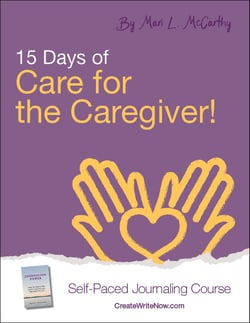by Barbara Stahura, CJF
 When a brain injury happens, the familiar story of a life can be altered in ways not possible with any other kind of injury or illness. So much you knew about yourself—the wealth of information you depended upon to lead your life—can blur or disappear, leaving you stranded and struggling in an unknown place. Along with cognitive and emotional challenges, you may face challenges with your physical abilities. You can feel as though you’ve been kidnapped to an alien planet where nothing is familiar and you are lost in dangerous territory.
When a brain injury happens, the familiar story of a life can be altered in ways not possible with any other kind of injury or illness. So much you knew about yourself—the wealth of information you depended upon to lead your life—can blur or disappear, leaving you stranded and struggling in an unknown place. Along with cognitive and emotional challenges, you may face challenges with your physical abilities. You can feel as though you’ve been kidnapped to an alien planet where nothing is familiar and you are lost in dangerous territory.
Family caregivers can feel equally bewildered, as well as terrified. I certainly did when my husband sustained a serious traumatic brain injury nearly a decade ago. But my journal offered a safe sanctuary where I could pour out my deepest thoughts and feelings without judgment or criticism. Writing somehow made them more manageable. Despite being diagnosed with secondary traumatic stress, journaling allowed me to hold on and cope with the overpowering uncertainty, fear, and anxiety.
As I’ve found during six years of guiding journaling groups for people with brain injury and family caregivers, telling your story through journaling can enhance the healing process. “Healing” here does not mean restoring your injured brain to its former functioning or your life to the way it used to be. Instead, it means finding healthy ways to become aware of, accept, and acknowledge what has happened so that you can move forward into your new post-injury story. Journaling, for even five or ten minutes at a time on a regular basis, can help release you from yearning for the past and open positive doors to your envisioned future.
How to journal
There are no rules in journaling, except perhaps to date all your entries. So don’t worry about correct spelling, grammar, and punctuation. You need not be a “good” writer. Simply write in whatever way is comfortable for you. You can write on paper or use a keyboard. If a brain injury prohibits you from doing either, you can speak your entries into a recording device, use speech-recognition software, or find a trusted confidante who will scribe your words without judgment or changes.
Keeping your journal private allows you to write honestly. But if you write an entry that you never want anyone to read, you can tear it out and destroy it. The benefit of journaling comes in the writing, not in preserving what you write.
To begin, you can simply pick up your pen or put your hands on the keyboard. But it’s helpful to create a structure for yourself by starting with a prompt (for example: Today I feel… or, Brain injury has…), experimenting with various techniques such as Dialogue or Unsent Letter, or even setting a time limit.
Especially if you’re writing about a traumatic experience, don’t simply begin writing with no structure in place. Even something as simple as a five-minute limit can help you avoid writing yourself off an emotional cliff with no way back to safety. Stop writing if you feel yourself getting unusually upset. And over time, try to keep a balance between positive and negative so that you don’t end up endlessly ruminating on the darker aspects of your life.
After a brain injury, you might not be able to write much or for very long. Do whatever you can, and please don’t judge yourself harshly. As your condition improves, you will be able to write more. If you’re a caregiver, you might have difficulty finding time for self-care, but know that you can journal in only five or ten minutes at a time. A small journal will fit in a purse or pocket, and you can write wherever you are.
As you continue journaling, you will have written memories of your healing and of how far you have come since brain injury altered your life. And there, in those words on the page, you—whether survivor or caregiver—have created the foundation on which to build the new story that will carry you into the future.
###
 Barbara Stahura, certified journal facilitator, guides people with brain injury, family caregivers, and others in harnessing the power of therapeutic journaling for healing and well-being. Co-author of the acclaimed After Brain Injury: Telling Your Story, the first journaling book for people with brain injury, she also presents journaling events for state Brain Injury Associations, trauma survivors, the National Guard, equine-facilitated therapeutic groups, and others. A member of the Therapeutic Writing Institute faculty and of the Lash & Associates Speakers Bureau on Brain Injury, she lives in Indiana with her husband, a survivor of brain injury. http://www.barbarastahura.com
Barbara Stahura, certified journal facilitator, guides people with brain injury, family caregivers, and others in harnessing the power of therapeutic journaling for healing and well-being. Co-author of the acclaimed After Brain Injury: Telling Your Story, the first journaling book for people with brain injury, she also presents journaling events for state Brain Injury Associations, trauma survivors, the National Guard, equine-facilitated therapeutic groups, and others. A member of the Therapeutic Writing Institute faculty and of the Lash & Associates Speakers Bureau on Brain Injury, she lives in Indiana with her husband, a survivor of brain injury. http://www.barbarastahura.com
Do you find yourself dwelling on missed opportunities? Or perhaps you're having trouble making sense of it all? Please download our free ebook, CreateWriteNow's Expert Guide to Therapeutic Journaling, shows you journaling can provide the tools you need to achieve the happiness we all deserve.
Caregiving can be very fulfilling, but also can take a toll on the caregiver. Our self-paced journaling course, 15 Days of Care for the Caregiver, offers journaling exercises, encouragement, and inspiration to put you on the path to better health and a renewed sense of balance and health in your life.




Leave Comment